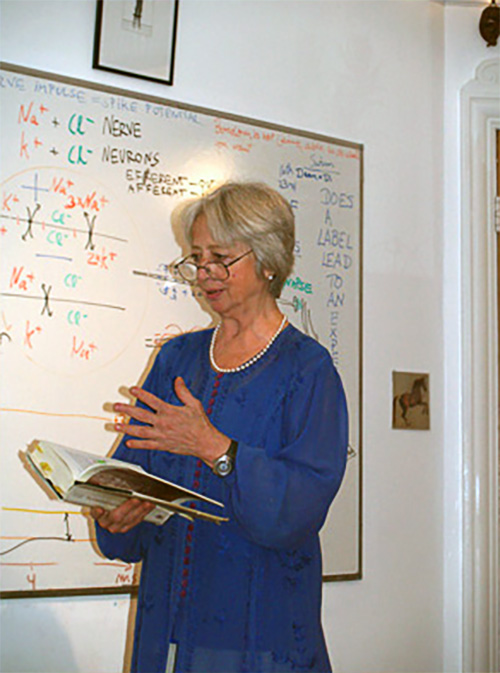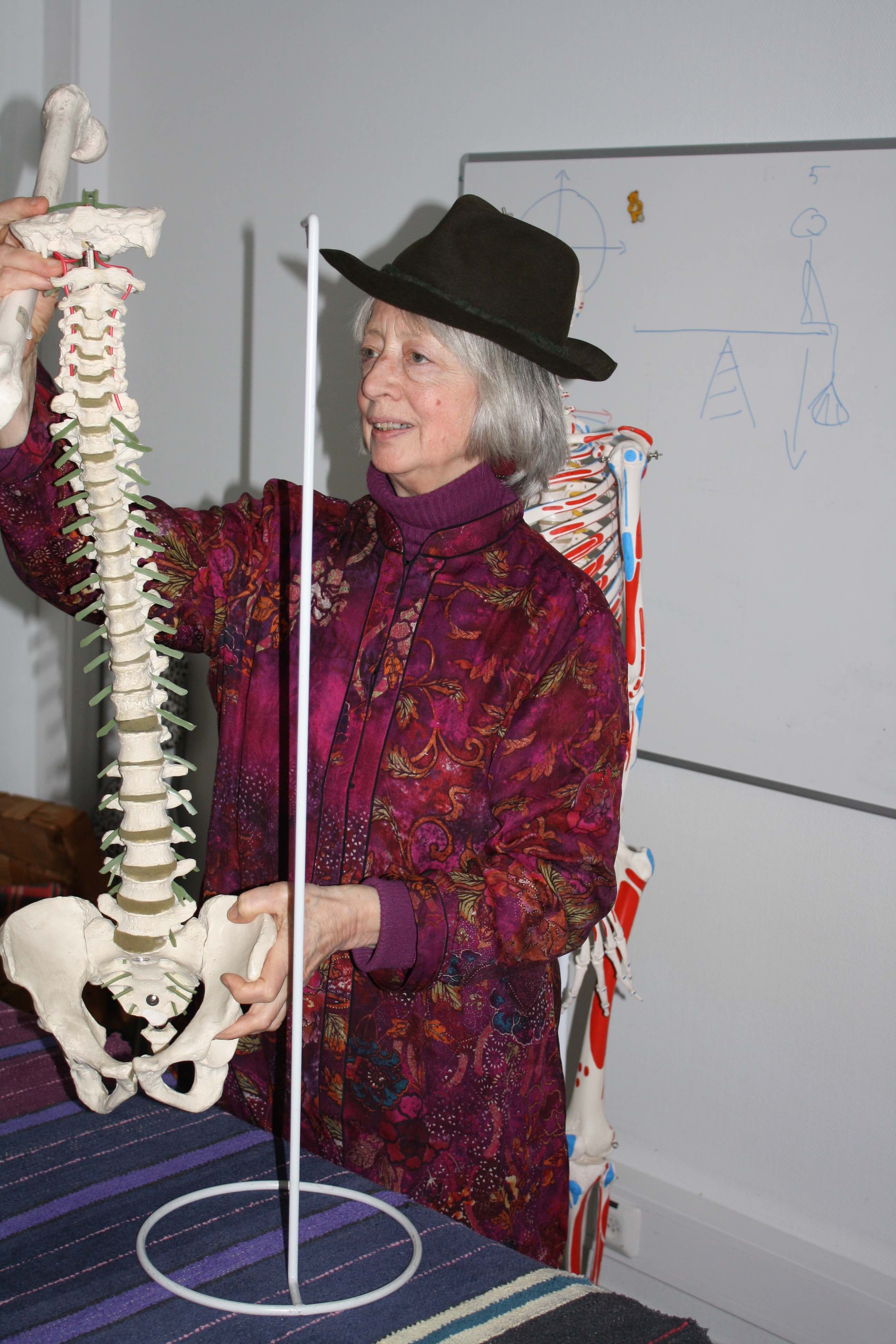Our Approach
LECTURES
Our thoughts here describe the role of lectures in Alexander Technique training.
THE ROLE OF LECTURES
Lectures, or talks, take place for half an hour every day. Lectures form an important contribution to the training of teachers in the Alexander Technique. The most obvious contribution is taking time to listen and question what we really hear.
Lectures cover Alexander’s books, anatomy and physiology, and other relevant subjects. One aim is to introduce students to the history and development of the Alexander Technique. Alexander’s books provide our common origin: they set out his experiences and vision of the Technique, and thus provide useful guidelines for teaching and learning the Technique. Walter Carrington’s article ‘Why it is so important to be familiar with Alexander’s books’ (download pdf) explains the purpose well.

Another aim is to understand and use anatomy to improve one’s own use and as a teaching aid. The way we teach anatomy is explained here.
In addition, each lecturer shares their own teaching experience and familiarises students with the application of the principles of the Technique from different perspectives.
Different teachers talking about the Technique demonstrate the constructive ways of thinking and talking about use and functioning available to us. It provides the vocabulary suitable for our work – a language which reflects how we learn.
As in all Alexander Technique teaching the purpose of lectures is not to provide students with ‘answers’ or to tell students how to teach, but to show the methodology of rational means-whereby of inhibition and direction applied to the process of teaching and learning.
ANATOMICAL ATTITUDE
Our thoughts describe our attitude for the role of anatomy in the Alexander Technique.
OUR ANATOMICAL ATTITUDE
“You can’t do something you don’t know, if you keep doing what you know.“
F. M. Alexander
A traditional study of anatomy and physiology can be very misleading for students of the Alexander Technique as it may encourage them to believe that the Technique is about mechanics and therefore only a matter of “right” positions. The focus of the Technique is on our way of reacting, our habits. However, anatomy and physiology do provide information about the functioning of the “self” (the self being the instrument that we have evolved and whose limits determine how we act and react).
At the Alexander Technique Studio we are therefore concerned with functional anatomy and physiology as they relate to perception, interpretation, and movement – these being the prime agents involved in reaction and action.
Traditionally, the study of human anatomy and physiology is too preoccupied with specifics. The study of the function of individual parts and the compartmentalisation of anatomy leads to a fragmented understanding of the whole, living being.
The purpose of our teaching of anatomy and physiology is to show how the psycho-physical organism is connected, and how it works as an integrated whole: i.e. is an indivisible unity.
Our study of anatomy and physiology covers:
- Functional and evolutionary anatomy: understanding how we are designed. Our potential for reacting is both shaped and limited by our structure and function.
Alexander’s first two books explain our present predicament from an evolutionary viewpoint, and we find that an evolutionary perspective helps to describe our anatomy and our behaviour. - Basic human anatomy as it relates to movement. Here we include the study of the skeleton, joints, and skeletal muscles.
Students are encouraged to identify muscles, joints, and bones on themselves and each other by touch. We call it “Feely Anatomy”.
The names of muscles and bones are only introduced where necessary for easy identification. We believe with Gray’s Anatomy that the learning of names is often a hindrance to the the understanding of muscle function.
“It must be emphasised that [the] more advanced considerations of the activities of living myonemes, muscles, and the interplay of groups of muscles, coordinated by a most complex hierarchy of central nervous control systems, render much of the customary myological nomenclaure as sometimes redundant, often inaccurate, and frequently frankly misleading.”Gray’s Anatomy, 36th edition, p. 529.” - Basic human muscular physiology:
We explore perception, movement, how muscles work, the nervous system, breathing, and the six senses (traditional five plus proprioception). The latter include the physiology of balance. The psychological effects of these are touched upon.
The study of the nervous system covers excitation and inhibition and the principle of neural networks.
We want to emphasise the continuity between different departments of anatomy, between different parts of the body, between anatomy, physiology and psychology, between parts and the whole. We want to show how the whole works to create homeostasis, a balance of body and mind in all activities of living.
Students do not sit any test in these subjects and are not required to memorise anything.
The purpose is to:
a) provide an introduction so that students can easily study on their own,
b) familiarise the student with present day scientific understanding of the human body and brain, and
c) help us to correct the misconceptions we have about how we function. (Frequent misconceptions involve location, size, shape, and movement of either parts or the whole of us).
Pathology is not covered; however, common neuro-muscular malfunctions which teachers of the Technique are likely to encounter and which affect a pupil’s ability to learn the Technique will be discussed.
Teaching aids used includes: two half skeletons, white board, a library of anatomy and physiology books and Alexander Technique books.

